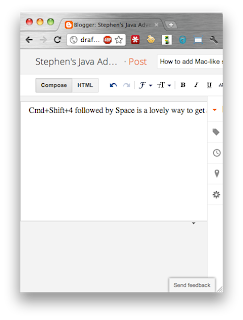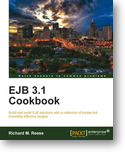For use when you have multiple JVM providers (Apple & Oracle), you want to be able to switch between JDKs for each CLI
usejava ()
{
local sel=$1.jdk
if [ -x "/Library/Java/JavaVirtualMachines/jdk$sel/Contents/Home/bin/java" -a ! -x "/Library/Java/JavaVirtualMachines/$1/Contents/Home/bin/java" ]
then
sel=jdk$sel
fi
local base=/Library/Java/JavaVirtualMachines
if [ -x "/System/Library/Java/JavaVirtualMachines/$sel/Contents/Home/bin/java" ]
then
base=/System/Library/Java/JavaVirtualMachines
fi
if [ -z "$1" -o ! -x "$base/$sel/Contents/Home/bin/java" ]
then
local prefix="Syntax: usejava "
for i in /Library/Java/JavaVirtualMachines/* /System/Library/Java/JavaVirtualMachines/*
do
if [ -x "$i/Contents/Home/bin/java" ]
then
/bin/echo -n "$prefix$(basename $i | sed -e "s/^jdk//;s/\.jdk$//;")"
prefix=" | "
fi
done
/bin/echo ""
else
if [ -z "$JAVA_HOME" ]
then
export PATH=$base/$sel/Contents/Home/bin:$PATH
else
export PATH=$(echo $PATH|sed -e "s:$JAVA_HOME/bin:$base/$sel/Contents/Home/bin:g")
fi
export JAVA_HOME=$base/$sel/Contents/Home
echo -n -e "\033]0;$(java -version 2>&1 | sed -e "s/.*\"\(.*\)\".*/Java \1/;q")\007"
fi
}
There is additional fun to be had, given that most Java based launchers that try to fix JAVA_HOME when not set will guess the Apple JVM path… so the following Java program can help
http://j.mp/TfdoxL a link to a free online iOS app development training course that looks worth checking out
Special Symbols and Characters on the regular Mac Keyboard
These are for the British Keyboard layout
Currency Symbols
| Symbol | Key combination |
|---|---|
| $ dollar | Shift+4 |
| ¢ cents | Option+4 |
| £ pound | Shift+3 |
| ¥ yen | Option+y |
| € euro | Option+2 |
Trademark and Copyright Symbols
| Symbol | Key combination |
|---|---|
| © copyright | Option+g |
| ® registered | Option+r |
| ™ trademark | Option+Shift+2 |
Apple Symbol
| Symbol | Key combination |
|---|---|
| apple | Option+Shift+K |
Math and Greek Character Symbols
| Symbol | Key combination |
|---|---|
| ± plus-or-minus | Option+Shift+Equals |
| µ micro | Option+h |
| π pi | Option+l (as in L is for llama) |
| √ square root | Option+t |
| ÷ divided by | Option+/ (slash is key to the left of right-hand shift key) |
| · middle dot | Option+Shift+9 |
| ≈ almost equal | Option+x |
| ≠ not equal | Option+= |
| ∞ infinity | Option+Shift+T |
| ≤ less than or equal | Option+, (comma) |
| ≥ greater than or equal | Option+. (period) |
| Å Angstrom sign | Option+Shift+K, Shift+A |
| ∑ summation sign | Option+Shift+F |
| ° degree sign | Option+Shift+0 (zero) |
| ∂ partial differential | Option+d |
| ∫ integral | Option+Shift+D |
| Ω Omega | Option+Shift+Z |
Copyediting, typesetting, and miscellaneous symbols
This is a repost of my post on the CloudBees Developers blog
TL;DR Source control injection attacks are a bigger worry than build tool injection attacks, and if you cannot trust your local filesystem, then you cannot trust anything.
A few exchanges on twitter have prompted me to write a fuller blog post on the subject of Cross-Build Injection (XBI) Attacks.
The idea of XBI is that you trick the developer and replace parts of their code with your code, thereby getting your code to be trusted by the developer.
Hamlet: … for there is nothing either good or bad, but thinking makes it so.
— Hamlet Act 2, scene 2, 239–251, William Shakespeare
The Apache Software Foundation is a meritocracy. By this we mean that you gain status based on the merit of your work and actions. In fact the status that you gain is a recognition of the merit of your work and actions.
Maven is an Apache project, that means that we have to follow the Apache rules and way. One of those rules is that we cannot hand out commit access to anyone who asks for it.
With Java Generics, it can be useful to insert wildcards wherever possible, but how do you decide which wildcard is correct? When do you use ? super T, ? extends T and when should you not use a wildcard at all.
The Get and Put principle: Use an
extendswildcard when you only get values from the structure. Use asuperwildcard when you only put values into the structure. Don’t use a wildcard when you both get and put values from/into the structure.
Cmd+Shift+4 followed by Space is a lovely way to get a screen shot of a window on an Apple Mac…
In fact here is one such screenshot:

Notice the nice shadow effect around the screenshot? Ever wanted to add that shadow effect to your non-mac screenshots?
ImageMagick is your friend
convert NoShadowScreenshot.png \( +clone -background black -shadow 80x20+0+15 \) \
+swap -background transparent -layers merge +repage WithShadowScreenshot.png
There you are, nice equivalent shadow added.
Java has a couple of “nice” features, specifically:
Built-in locks
Baked in support for object serialization
Now I don’t want to get into a war about how both of these are flawed (there was a reason that I put “nice” in quotes) but here is a quick note on how to make the two play nice (more as a reference to myself… but if others find this useful, well and good).

The kind people at Packt gave me a copy of “EJB 3.1 Cookbook” by Richard M. Reese to review. This book should be viewed as a collection of building block recipes, not as a collection of meal plans, and not as a how to cook book that you would read from cover to cover. When I look at the book from this point of view, I think that it is well structured and put together and the content is pitched just about right. This book does not tell you when to use a specific recipe, so it would be a mistake to think that this is the only book you would need for EJB 3.1. However, when you need a “Béchamel sauce”, this is a book that you can go to, quickly find and open up the right section and read the recipe to refresh your mind and get cooking.
There has been this idea running around the back of my head for a while, and it’s only now that it is starting to crystalize into something that I can express.
When we look at Open Source projects, we see that there is a hierarchy of involvement. There are different levels at which you can be involved, and at each higher level, there will be less and less individuals. For now I am going to divide involvement up like this: